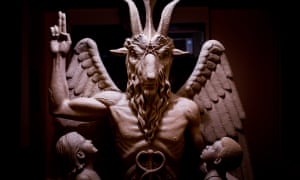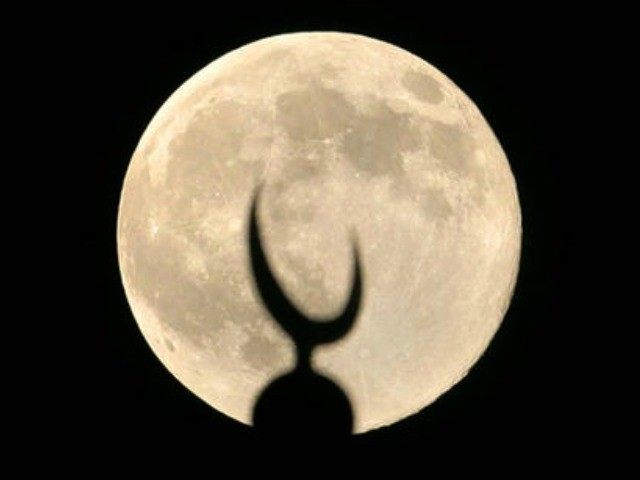WND EXCLUSIVE
ARABS ATTACK JEWS ON TEMPLE MOUNT
On Jewish day of mourning commemorating destruction of 1st, 2nd temples
AARON KLEIN
TEL AVIV – As Jews here commemorated the destruction of the First and Second Jewish Temples, masked Arabs on the Temple Mount used a mosque to amass stones, Molotov cocktails and other explosives with the intent of attacking Israeli police and Jewish worshipers ascending the holy site.
The Arabs, described as mostly youth, engaged in violent clashes with Jerusalem Police, who used non-lethal means to push the rioters into the al-Aqsa Mosque to prevent what would have been a major attack on Jewish worshipers Sunday.
The Arabs holed up overnight inside the al-Aqsa Mosque, where they set up barricades using shoe racks, iron rods, and ropes to prevent the police from entering.
The plan was reportedly to attack Jewish worshipers Sunday as Jews worldwide celebrate the Jewish fast day of Tisha Báv, or the ninth day of the lunar Jewish month of Av. The day marks the anniversary of several major disasters in Jewish history, most notably the destruction of both the First and Second Jewish Temples in Jerusalem.
Is the current Temple Mount REALLY the site where God’s Holy Temple actually stood? Get the DVD that probes this question like never before!
Citing intelligence on the pending Arab riot, Jerusalem Police headed toward the outside platform of the al-Aqsa Mosque, where numerous masked rioters were preparing an attack, in a bid to thwart the violence. The police did not enter the mosque itself.
“The police were attacked immediately upon entering the Temple Mount compound by Palestinians armed with rocks, firebombs, fireworks and metal pipes,” Jerusalem Police Spokesperson Micky Rosenfeld told reporters, adding that four police officers were lightly wounded during the raid.
The police pushed the attackers inside the al-Aqsa mosque and locked the door to secure the area and to allow Jewish worshipers to ascend the site.
Israeli President Reuven Rivlin commented on the attack.
“I express my support for the security forces, and for their determination to prevent any harm or interference to the prayers at the Western Wall, the remnant of our Temple,” Rivlin said. “Such acts of hatred cannot be tolerated and we will not allow any disturbances to prevent Jews from praying at this holy site.”
Culture and Sport Minister Miri Regev was not happy with the police action, which only resulted in the rioters being closed off inside the mosque while no arrests were made. She blasted what she called “police incompetence in dealing with the rioters.”
“The Temple Mount is a holy place for Jews and Muslims,” Regev told reporters here. “The government must make sure that Jews can go on the Temple Mount throughout the entire year, certainly on Tisha B’Av.”
The communications minister and government spokesman for the Kingdom of Jordan, Mohammad al-Momani, astonishingly called the Jerusalem police action an “Israeli provocation against Arabs and Muslims by breaking into the al-Aqsa complex.” He did not mention the police raid was in direct response to the Arab attempt to attack Jewish worshipers, that the Arabs had first used the mosque as a place to store munitions intended in the attack, and that the police did not actually enter the mosque.
Holiest Jewish site
The Temple Mount is the holiest site in Judaism. Muslims now claim it is their third holiest site, although their stake changed several times throughout history.
The First Temple was built by King Solomon in the 10th century B.C. It was destroyed by the Babylonians in 586 B.C. The Second Temple was rebuilt in 515 B.C. after Jerusalem was freed from Babylonian captivity. That temple was destroyed by the Roman Empire in A.D. 70. Each temple stood for a period of about four centuries.
According to the Talmud, the world was created from the foundation stone of the Temple Mount. It’s believed to be the biblical Mount Moriah, where Abraham fulfilled God’s test of his willingness to sacrifice his son Isaac.
The Temple Mount has remained a focal point for Jewish services for thousands of years. Prayers for a return to Jerusalem and the rebuilding of the Temple have been uttered by Jews since the Second Temple was destroyed, according to Jewish tradition.
The al-Aqsa Mosque was constructed in about A.D. 709 to serve as a shrine near another shrine, the Dome of the Rock, which was built by an Islamic caliph. Al-Aqsa was meant to mark what Muslims came to believe was the place at which Muhammad, the founder of Islam, ascended to heaven to receive revelations from Allah.
Jerusalem is not mentioned in the Quran. It is mentioned in the Hebrew Bible 656 times.
Islamic tradition states Muhammad took a journey in a single night on a horse from “a sacred mosque” – believed to be in Mecca in southern Saudi Arabia – to “the farthest mosque.” From a rock there, according to the tradition, he ascended to heaven. The farthest mosque became associated with Jerusalem about 120 years ago.
According to research by Israeli author Shmuel Berkovits, Islam historically disregarded Jerusalem as being holy. Berkovits points out in his book “How Dreadful Is This Place!” that Muhammad was said to loathe Jerusalem and what it stood for. He wrote Muhammad made a point of eliminating pagan sites of worship and sanctifying only one place – the Kaaba in Mecca – to signify there is only one deity.
As late as the 14th century, Islamic scholar Taqi al-Din Ibn Taymiyya, whose writings influenced the Wahhabi movement in Arabia, ruled that sacred Islamic sites are to be found only in the Arabian Peninsula and that “in Jerusalem, there is not a place one calls sacred, and the same holds true for the tombs of Hebron.”
A guide to the Temple Mount by the Supreme Muslim Council in Jerusalem published in 1925 listed it as Jewish and as the site of Solomon’s temple. The Temple Institute acquired a copy of the official 1925 “Guide Book to Al-Haram Al-Sharif,” which states on page 4: “Its identity with the site of Solomon’s Temple is beyond dispute. This, too, is the spot, according to universal belief, on which David ‘built there an altar unto the Lord.’”
No-pray zone
The Temple Mount was opened to the public until September 2000, when the Palestinians started their Intifada, or “uprising,” by throwing stones at Jewish worshipers after then-candidate for prime minister Ariel Sharon visited the area.
Following the onset of violence, the new Sharon government closed the Temple Mount to non-Muslims, using checkpoints to control all pedestrian traffic for fear of further clashes with the Palestinians.
The Temple Mount was reopened to non-Muslims in August 2003. It’s been open to non-Muslims only during certain hours, and not on any Christian, Jewish or Muslim holidays or other days considered “sensitive” by the Waqf.
During “open” days, Jews and Christians are allowed to ascend the Mount, usually through organized tours and only if they conform first to a strict set of guidelines, which include demands that they not pray or bring any “holy objects” to the site. Visitors are banned from entering any of the mosques without direct Waqf permission. Rules are enforced by Waqf agents, who watch tours closely and alert nearby Israeli police to any breaking of their guidelines.













